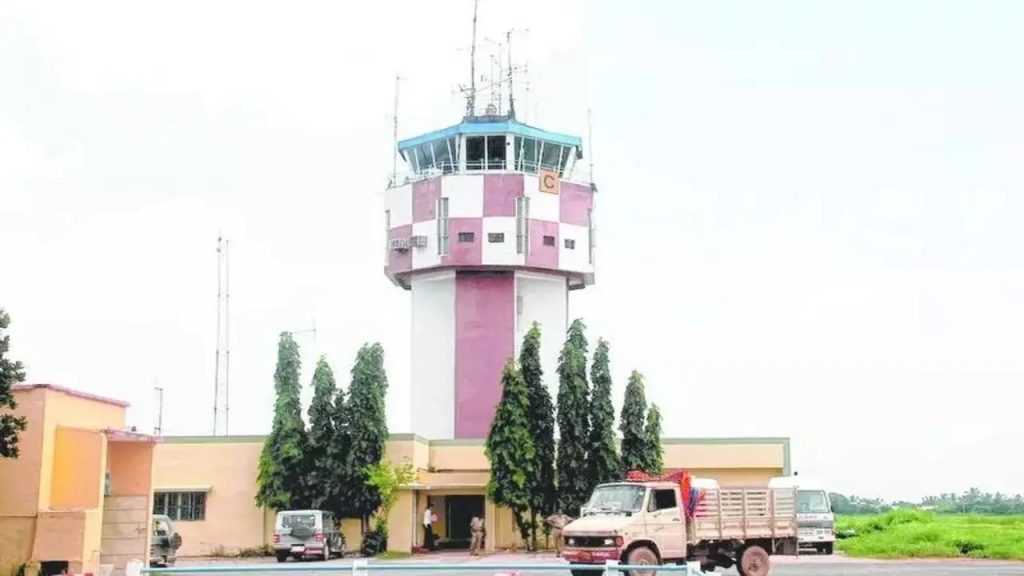If you’ve been flying in and out of Bhubaneswar’s Biju Patnaik International Airport (BPIA), buckle up—because big changes are coming. The airport is gearing up for a ₹1000 crore (roughly $120 million) expansion project that will completely transform its infrastructure and passenger experience. On top of that, the old Air Traffic Control (ATC) tower is about to retire, with a shiny new 11-story tower already taking over operations.

This isn’t just a local upgrade—it’s a major move in India’s aviation growth story. Airports across the country are struggling to keep up with the boom in domestic and international travel. And if you’ve ever stood in a long airport security line or waited on the tarmac while your plane “waits for clearance,” you know why these updates matter.
Bhubaneswar Airport to Undergo ₹1000 Crore Expansion
| Topic | Details |
|---|---|
| Project Cost | ₹1000 crore (~$120 million) |
| New Terminal (T3) | Integrated 65,000 m² design, 8.6 million passengers per year |
| ATC Tower Update | Old tower set for decommissioning; new 44.2-meter, 11-story tower in use |
| Operational Boosts | Parallel Taxi Track (PTT) and Rapid Exit Taxiway (RET) approved by DGCA |
| Sustainability | 4 MW solar plant, rainwater harvesting, sewage treatment |
| Official Source | Airports Authority of India |
The ₹1000 crore expansion of Bhubaneswar Airport is more than just a facelift—it’s a future-proofing move. With a brand-new integrated terminal, a cutting-edge ATC tower, and upgraded taxiways, the airport is gearing up to handle more passengers, more flights, and deliver a world-class experience.
For travelers, it means shorter lines, greener flights, and smoother journeys. For professionals, it signals Odisha’s rise as a stronger hub for investment and connectivity.
Why This Expansion Matters
Think of an airport like a city. The terminals are your downtown streets, the runways are highways, and the ATC tower is city hall—keeping traffic moving without crashes. Right now, Bhubaneswar Airport has been handling more flights and travelers than it was originally designed for. That means bottlenecks: long queues, slower baggage claim, and sometimes delayed flights.
The expansion is designed to fix these pain points. The new Terminal 3 (T3) will be a modern, integrated facility that combines arrivals and departures under one roof—more like Chicago O’Hare’s big terminals or Atlanta Hartsfield-Jackson’s domestic terminal than the current split setup.

Breaking Down the Expansion
1. The New Terminal (T3) — Bigger, Smarter, Better
- Size & Capacity: At about 65,000 square meters, T3 will handle up to 8.6 million passengers annually. For comparison, that’s like every single person in New York City flying through Bhubaneswar once a year.
- Passenger Flow: Instead of separate arrival and departure buildings, it’ll be one integrated structure, making navigation easier for passengers.
- Facilities: Six new aerobridges (those tunnels that connect you directly from gate to plane) will cut down the “bus rides across the tarmac” experience.
2. Decommissioning the Old ATC Tower
The old ATC tower, which has been running since the airport’s earlier days, is now outdated. All operations have already shifted to the new 11-story tower (44.2 meters tall), featuring advanced automation built under India’s “Make in India” initiative.
- DGCA Approval: Authorities are awaiting clearance from the Directorate General of Civil Aviation (DGCA) to officially decommission the old tower.
- Safety First: The new tower has faced scrutiny for fire-safety certification and compliance with building codes, but once finalized, it will mark a huge leap forward.
3. Operational Upgrades — Faster Takeoffs and Landings
Ever sat on a runway wondering why your plane wasn’t moving? That’s often because of traffic jams on the taxiways. To fix this:
- Parallel Taxi Track (PTT): Lets one aircraft taxi while another is taking off—boosting throughput.
- Rapid Exit Taxiway (RET): Allows planes to clear the runway quickly after landing, reducing delays.
- Impact: With these changes, BPIA can handle up to 20 aircraft per hour, compared to the current 15.
4. Green and Sustainable Growth
Bhubaneswar Airport is also taking a green lead:
- Solar Power: Runs entirely on renewable energy via a 4 MW solar plant.
- Water Management: Uses rainwater harvesting and sewage treatment plants to recycle resources.
- Recognition: It’s one of India’s first airports to be 100% solar-powered, similar to Cochin International Airport, which earned global recognition from the UN.
What This Means for Travelers
- Shorter Waits: Faster check-ins, less time spent waiting for baggage.
- Better Connections: Smoother transfers between domestic and international flights.
- Comfort: More lounges, dining spots, and shopping opportunities (because let’s be real—airport shopping is part of the fun).
For professionals, this also means improved regional connectivity—a big deal for businesses in Odisha looking to attract global investors.
Practical Advice for Passengers
- Plan Ahead: Once construction kicks in, expect some disruption. Always allow extra time before your flight.
- Check Airline Updates: Keep an eye on official notices from your airline and AAI.
- Use Tech: Download your airline’s app to track gate changes and boarding calls.
- Be Eco-Friendly: Carry a refillable bottle—most modern terminals now have water refill stations.
VSS Airport in Controversy as Director is Accused of Casteist Slurs and Assault
Illegal Blasting Rocks Maoist-Hit Tulasi Hills: Andhra Firm Draws Scrutiny
Nanda Utsav at Puri Srimandir: A Divine Continuation of Janmashtami
FAQs
Q1: When will the new Terminal 3 be ready?
The exact timeline depends on AAI’s board approval and construction pace. Similar projects take about 3–4 years to complete.
Q2: Why is the old ATC tower being decommissioned?
It’s outdated and no longer meets safety and efficiency standards. The new tower, with automation and better visibility, is already operational.
Q3: Will flights be disrupted during construction?
Minor delays are possible, but the airport plans to keep disruptions minimal by phasing construction.
Q4: How many passengers does Bhubaneswar Airport handle now?
Current terminals handle about 3.5–4 million passengers annually—well below projected future demand.
Q5: Is Bhubaneswar Airport really 100% solar-powered?
Yes, thanks to its 4 MW solar plant and eco-friendly water management systems.





